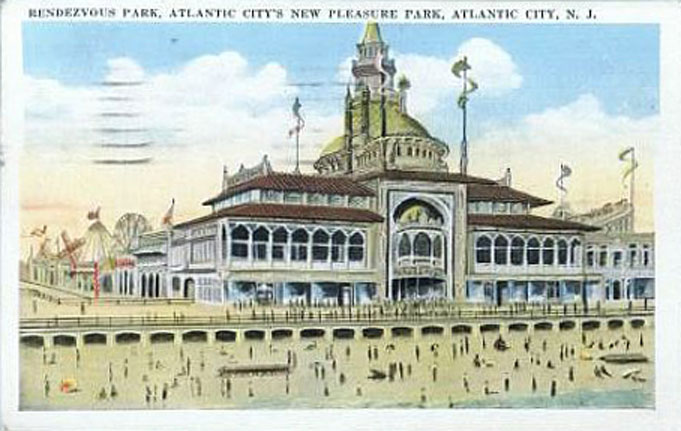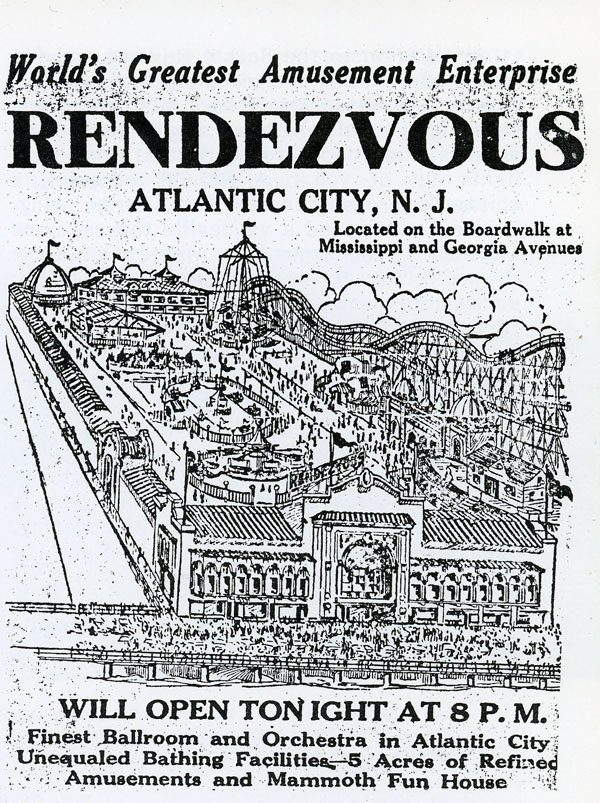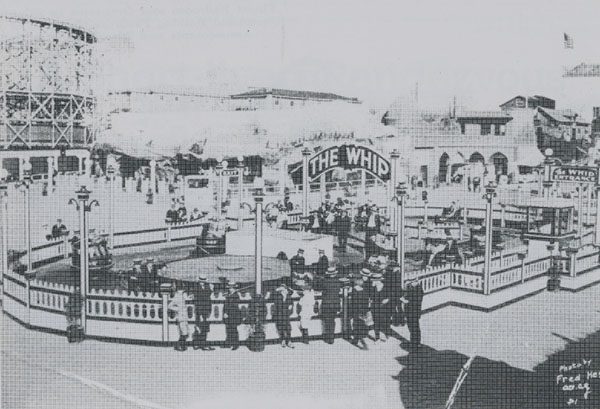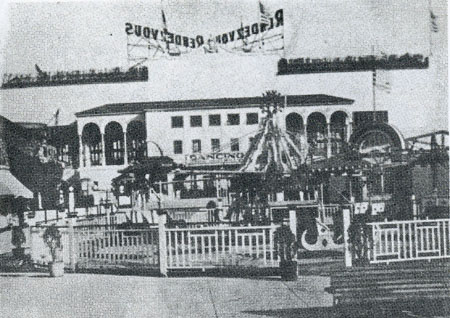
Written by Jeffrey Stanton

Rendezvous Park in Atlantic City was built at a cost of $2,000,000 in 1921 by the Boardwalk Company. It was centrally located along the Boardwalk on a five-acre lot between the Ambassador and Ritz-Carlton Hotels. (between Georgia and Mississippi Avenues). With the proximity of the Pennsylvania Railroad running along Georgia Avenue, and the Reading and Interurban Railroad running along Mississippi Avenue, the railroads brought thousands of excursionists daily to the entrances of the amusement park. The Chamber of Commerce estimated that there were nearly 20,000,000 visitors to the resort each year. While there had always been amusement attractions along Atlantic City’s Boardwalk and on its piers, they were scattered. The company’s plan was to concentrate most of the resort’s attractions in one location, to build a high-class resort that would also provide entertainment for people of all classes. The creative impulse and major financing was provided by S. Bernard November, a well-known financier from Baltimore.
The company hired Oscar Jurney, the former superintendent of Coney Island’s Luna Park, to design and construct the park. Col. George A. Schastey from San Francisco drew up the architectural . engineering plans for the park. They began construction in Sept 1920 and finished in time for its June 4, 1921 grand opening. Its main entrance was along the Boardwalk, but there were other entrances on each of its sides. Its main front building costing $300,000 was of concrete and steel construction , with bathhouses below the Boardwalk level opening onto the beach. On the Boardwalk level were four stores on each side of the entrance arcade leading into the park, and upstairs was a spacious ballroom overlooking the boardwalk with a capacity of 2000 couples. Dance music was by a nine-piece orchestra.

Grand Opening Advertisement - Showing Park Layout
The plaza marked the entrance of the park from the Boardwalk with a large smoker’s room on the left and a large soda fountain to the right. Just beyond along the midway was a Noah’s Ark rocking fun house and a Japanese Tea Garden. The large L.A. Thompson scenic railway loomed at the rear of the park along Pacific Avenue along with the company’s Old Mill whose enclosed serpentine canals wind along beneath the coaster. The park erected a $68,000 fun house, a $22,000 Parker carousel , an extra large Dodgem, a Uzzell Gyroplane, a Whip , an Aeroscope aerial ride, The Frolic, a shooting gallery, Shimmie Auto Ride, “The Unseen World”, an arcade with skeeball alleys, and the Magic Ride. Free entertainment included circus acts and afternoon and evening band concerts.
While the park’s grand opening and first few weeks attracted many visitors, the park wasn’t financially successful the first summer. After a fire in September gutted the Dance Hall, Fun House, and Bathhouse, the owners gave up. A new syndicate, the Atlantic City Exposition Company headed by John Gordon and Mike Sursock, bought the park Their plan, to offset free admission, was to have an large exhibit hall where many of the large national advertisers from all sections of the country could show off their products and services. Of course they paid for the space. The company felt that these free exhibits would attract the boardwalk and excursion crowds and would then pay to ride the park’s attractions.

View of Rendevous Park's Whip & Roller Coaster

View Towards Entrance & Boardwalk - Frolic Ride
Only one new attraction was added, the Love’s Nest. It was cozy tunnel ride with vehicles holding just two people. The “Shimmy Auto” was one of the best amusing rides in the park. The bathhouse was rebuilt with 1000 lockers. The park’s free circus’ five acts included the Welandoes aerial act, trained seals, Raymond and Mason as the girl and the clown, and an Arabian troupe of acrobats offering pyramid building.
It was never reported if the Rendezvous Park had a successful second season, but the park’s central location was ideal for the city’s new Convention Center. The city purchased the site in 1924.